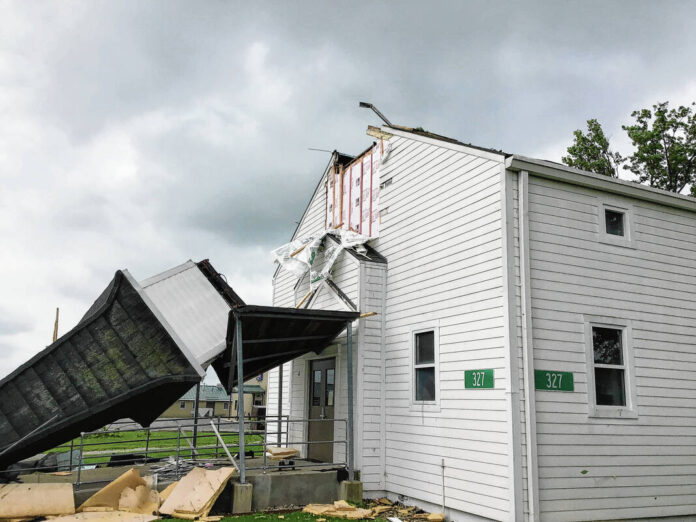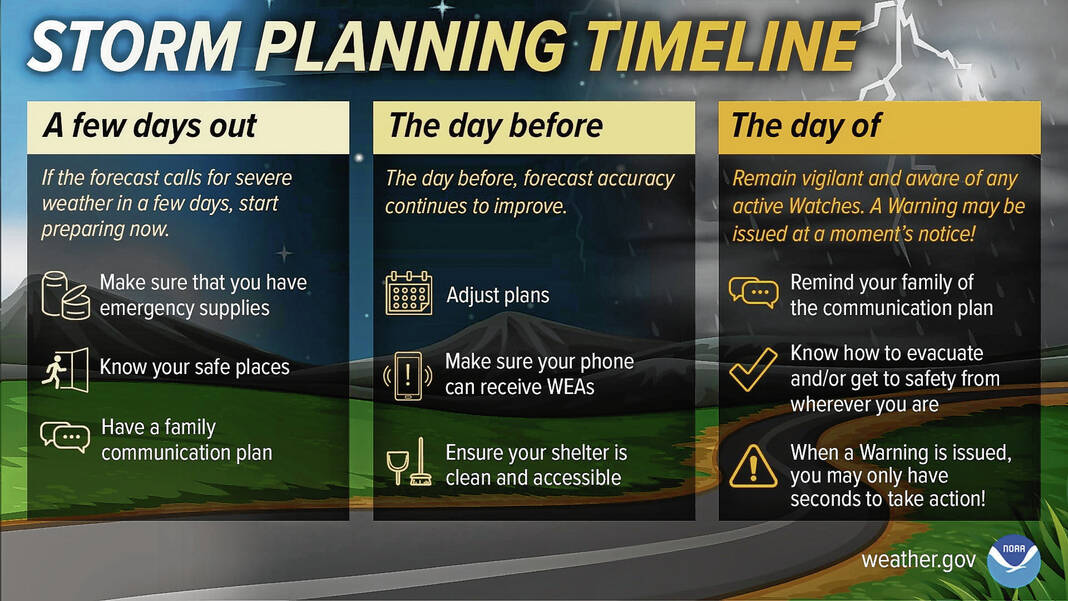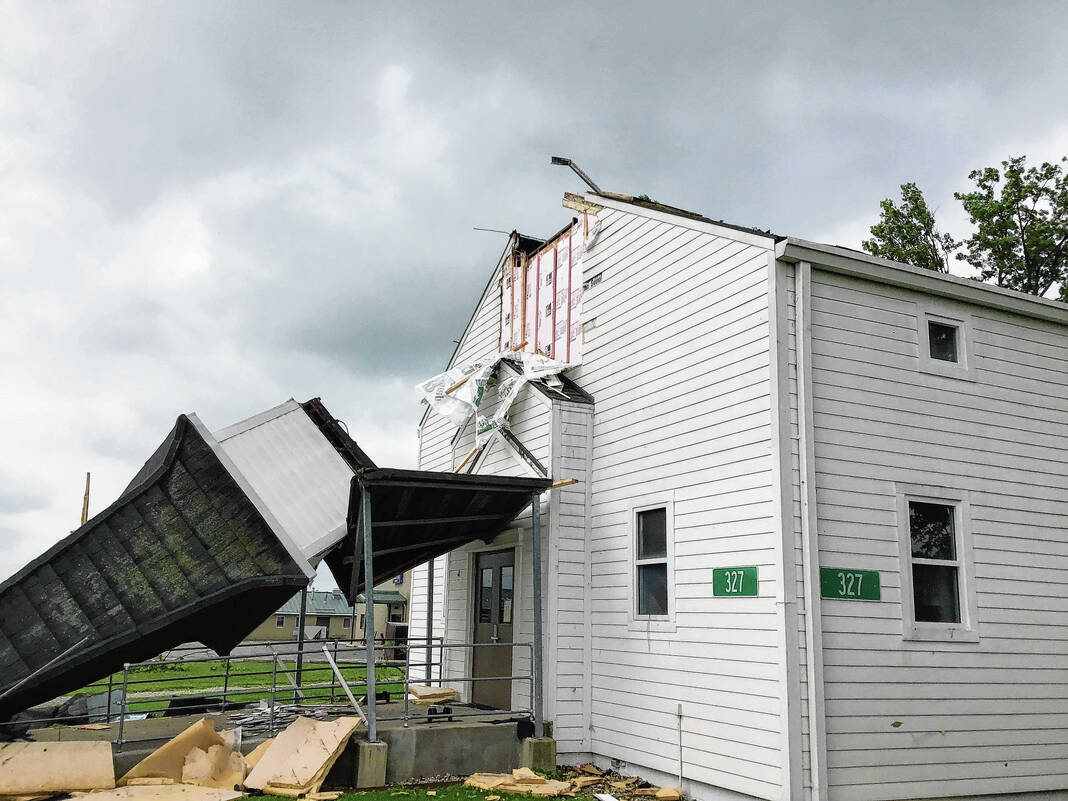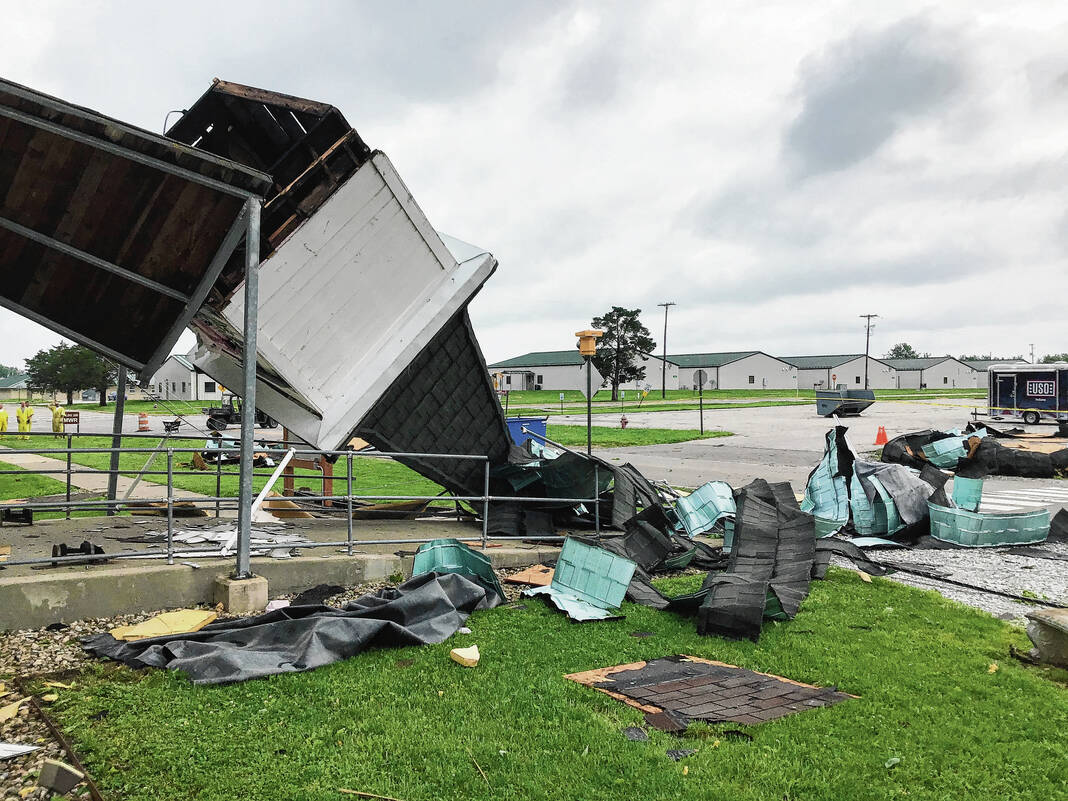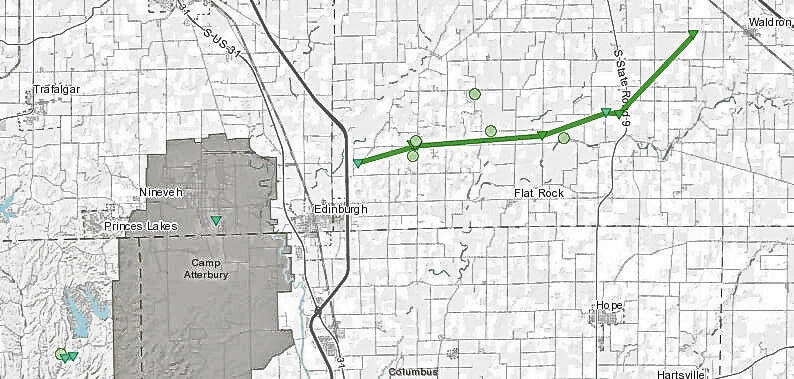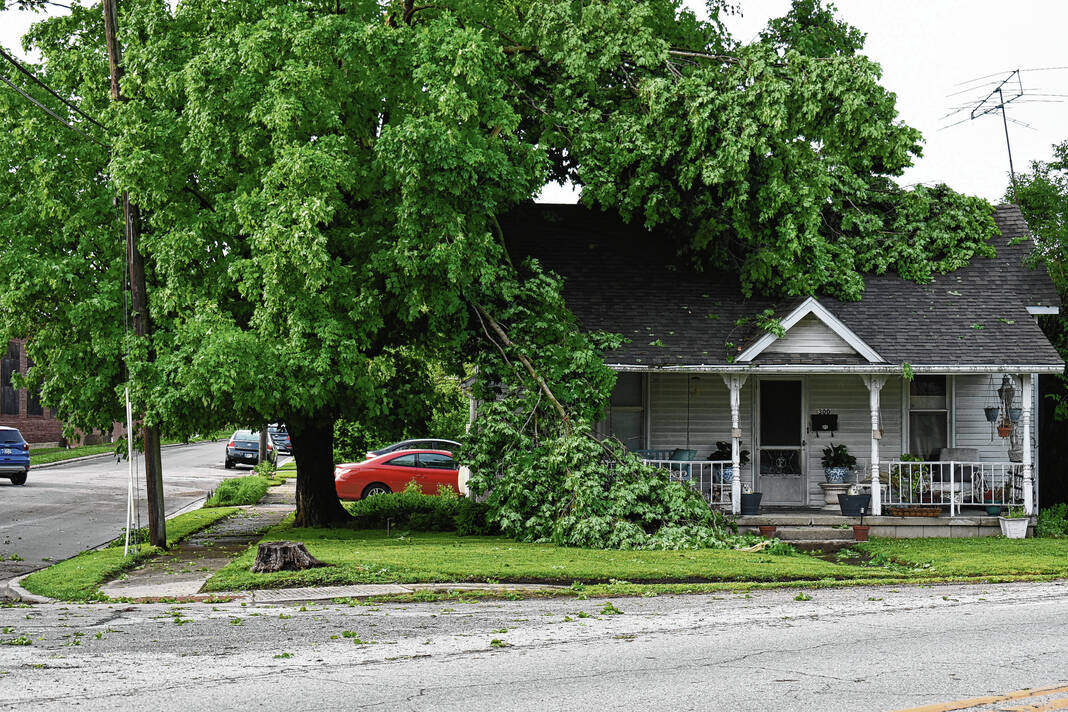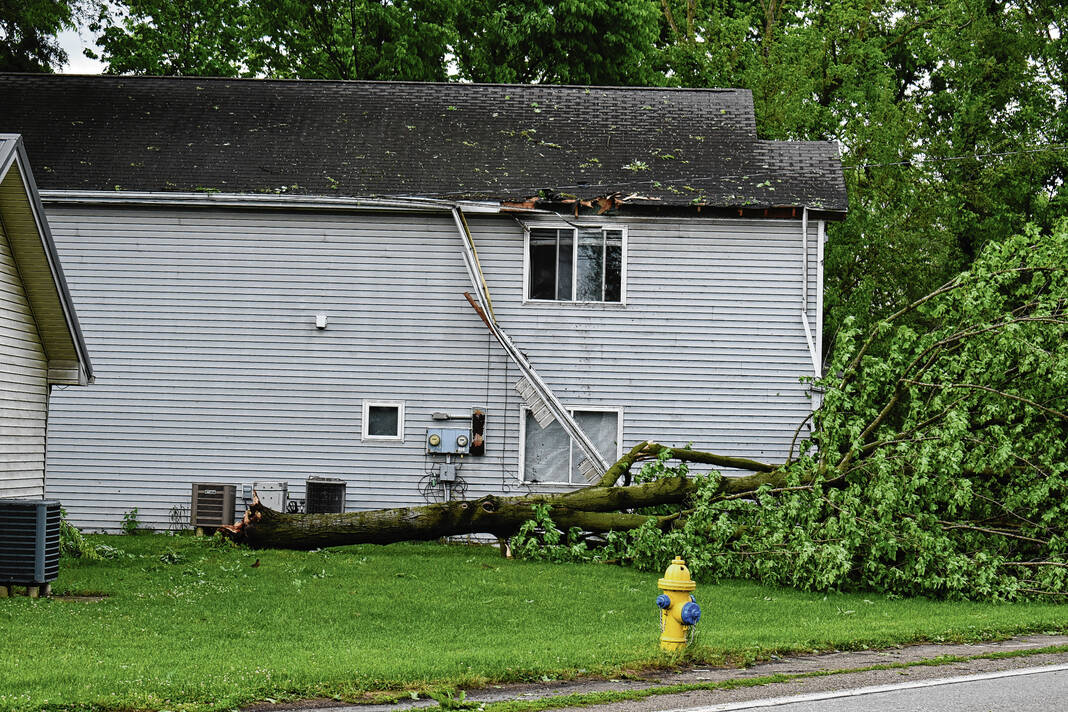The week may have started with snow flurries, but local officials are encouraging residents to pay attention to another type of spring weather: severe storms.
Indiana Gov. Eric Holcomb has proclaimed March 12-18 as Severe Weather Preparedness Week. Officials’ goal is to better educate people about the hazards of severe thunderstorms and tornadoes and to help everyone be prepared when severe weather occurs.
“We have to pay attention to what’s going on day-to-day when it comes to weather in Indiana,” said Mike Pruitt, Bargersville Fire deputy chief. “We have snow on the ground … but it could change at the drop of a hat and next thing you know we’re dealing with thunderstorms, flooding and tornadoes.”
Pruitt knows first-hand how important it is to prepare for severe weather in advance. A public information officer for Indiana Task Force 1, he has responded to several catastrophic events and disasters including the December 2021 Mayfield, Kentucky tornado.
“We have to have a plan, we have to have a backup plan,” he said. “If we don’t take time to prepare for severe weather in the state of Indiana, then we’re setting ourselves up for failure.”
By not having plans in place ahead of time, people could be risking not only their lives but the lives of their family members and first responders. While first responders are trained to respond to these situations, it’s helpful when people take actions to be able to support themselves in case they can’t get there quickly, Pruitt said.
Planning ahead
Having a plan is one of the most critical ways people can prepare for severe weather. Families should have a designated place to go to for shelter in the safest part of their home, said Stephanie Sichting, director of the Johnson County Emergency Management Agency.
For families, these plans should address what to do if a storm hits, where to meet after a storm and if there is any family that can help out, Pruitt said.
Another way to prepare is by having preparedness kits. Kits should include three days worth of non-perishable food and water, a gallon of water per person per day, extra batteries and a battery-powered radio. They should also have flashlights, medicine and medical items, along with other personal hygiene items, Sichting said.
People with pets should also make sure to have supplies for them, Pruitt said.
People should also make sure to have cash on hand, as ATMs may not be available. Whenever Pruitt is deployed to a disaster site, he’ll take cash with him to make sure he can get essentials like food or gas.
“It’s very important to have some of that around,” he said.
Copies of personal documents should also be made in case the worst occurs, and people can do this electronically. People should also consider putting physical documents in safes or a safe-deposit box, Pruitt said.
Additionally, cell phones should be charged up as storms approach. People should also be aware that texting is the best way to communicate after a disaster, Pruitt said.
Hearing warnings
People also need to make sure they have multiple ways to get weather alerts. People shouldn’t rely on outdoor sirens for warnings as that’s not their intended purpose, Sichting said.
“People are always griping they can’t hear them,” she said. “They’re not meant to be heard inside. They are an outdoor warning siren.”
To stay weather aware, people should watch the weather on the news, use an app to track the storms and make sure to have an app capable of sending weather alerts. Even with these options, people should also consider having a weather radio or an AM/FM radio, as TV could be knocked out and cell phone towers could be down, officials say.
“One of the fallback go-to’s that always seems to be up and running is local radio,” Pruitt said. “We can gather a lot of disaster information, whether it’s an early warning for severe weather or where to get help.”
Before severe weather arrives, people should also understand the difference between watches and warnings, Pruitt said. A watch means severe weather is likely to develop, while a warning means severe weather is happening now.
Whenever severe weather is approaching, Pruitt says he looks to counties west of Johnson County to see what possible warnings could come this way. Once he sees warnings to the west, there’s a good chance Johnson County will have one too.
“Knowing the difference between a watch and a warning is very important,” he said. “You need to be ready to pull the trigger on whatever you need to do (to be safe).”
During the storm/aftermath
One thing people should absolutely not do if a tornado is approaching is stand outside taking video as it approaches. As people are taking video, they often wait last minute to go to shelter and this could be deadly, Pruitt said.
“It’s something we see every time that a tornado approaches the area,” he said.
If driving on the interstate as a tornado approaches, people should not stop under an overpass for shelter. Sometimes people will park their cars and take shelter in the upper areas of an overpass, but this is not a good idea as it’s very dangerous and can be deadly, he said.
“The best thing you can do is get into a low-lying ditch, maybe along the interstate, and lower your profile,” Pruitt said. “It’s a much safer option than going up and trying to get into … what you think are safe areas around these overpasses.”
Even on a country road, low-lying ditches are still a better option for safety than vehicles, Pruitt said.
If it is possible to drive away from the storm, that’s also a good option. Most residents are not professional storm chasers, and shouldn’t try to be, he said.
A lot of the injuries and deaths occur after a storm as people try to pick up debris around downed power lines. People should be careful not to touch downed powerlines, as it can be deadly, officials say.
More than just tornadoes
It’s not just the wind that could cause damage, flooding can too. On average, flooding is the deadliest thunderstorm-related hazard but it is often overlooked, according to the National Weather Service.
The majority of flood deaths are preventable and occur as a result of people driving into flood waters, meteorologists say. If someone lives in a flood-prone area, they should evacuate as soon as possible. If they wait, first responders may not be able to save them, Pruitt said.
When motorists encounter flooded roadways, they should remember “turn around, don’t drown.” Many people try to push their way through a flooded roadway, but don’t realize a portion of the roadway is washed out. This can cost people their lives, Pruitt said.
“Find another route or don’t use the routes at all until that water level has lowered,” Pruitt said.
STATEWIDE TORNADO DRILL
Tornado sirens will sound across Johnson County as part of a statewide test today.
A statewide tornado drill will take place at 10:15 a.m. Tuesday as part of Indiana’s Severe Weather Preparedness Week. Sirens across Johnson County will sound as part of the test.
The drill will coincide with a statewide test of Indiana’s emergency communications system by the National Weather Service, in conjunction with the Indiana State Police and Public Safety Commission, the Indiana Department of Homeland Security, the Indiana Department of Education, the Indiana Broadcasters Association, the American Red Cross and Amateur Radio Operators.
Local schools will also take part in the drill, except for Edinburgh as students are on spring break.
If the weather conditions are not ideal for the test, it will be postponed to Wednesday.
Information: Johnson County EMA, National Weather Service.


